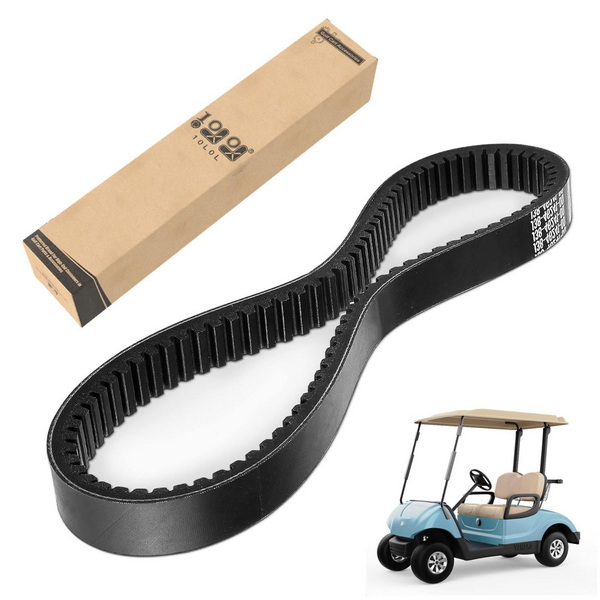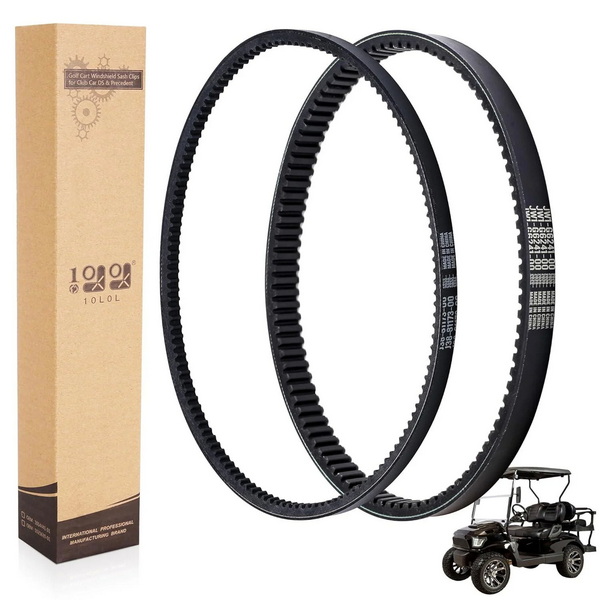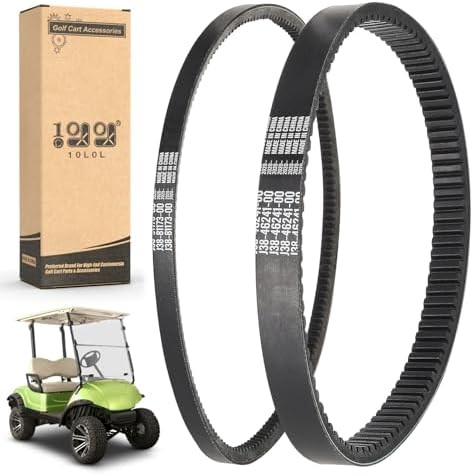Content Menu
● Introduction
● Understanding Golf Cart Drive Systems
>> Belt-Driven System
>> Direct Drive System
● Yamaha Electric Golf Cart Drive System
● Components of Yamaha Electric Golf Cart Drivetrain
>> AC Motor
>> Motor Controller
>> Rear Axle
>> Differential
>> Transaxle
● Advantages of Direct Drive System in Yamaha Electric Golf Carts
● Yamaha Drive2 Features
>> QuieTech EFI Technology
>> Comfortable Seating
>> Yamaha-built Motor Control Unit
>> Tru-Trak II Independent Front Suspension
>> Largest Occupant Space
● Maintenance of Yamaha Electric Golf Carts
● Comparing Yamaha Electric Golf Carts to Other Brands
● The Future of Electric Golf Cart Technology
● Conclusion
● Frequently Asked Questions
>> 1. How often do I need to replace the drive belt in a Yamaha electric golf cart?
>> 2. What are the main components of a Yamaha electric golf cart's drivetrain?
>> 3. How does the absence of a drive belt affect the maintenance of Yamaha electric golf carts?
>> 4. Are there any disadvantages to not having a drive belt in an electric golf cart?
>> 5. Can I upgrade an older belt-driven electric golf cart to a direct drive system?
Introduction
Yamaha is a well-known manufacturer of high-quality golf carts, offering both gas and electric models. When it comes to electric golf carts, many people wonder about their internal components, particularly the drive system. In this article, we'll explore whether Yamaha electric golf carts have drive belts and delve into the intricacies of their drivetrain systems.

Understanding Golf Cart Drive Systems
Before we address the specific question about Yamaha electric golf carts, it's important to understand the basics of golf cart drive systems. Golf carts typically use one of two main types of drive systems:
1. Belt-driven system
2. Direct drive system
Belt-Driven System
In a belt-driven system, a belt connects the motor to the rear axle, transferring power to the wheels. This system is common in many gas-powered golf carts and some older electric models.
Direct Drive System
A direct drive system, on the other hand, doesn't use a belt. Instead, the motor is directly connected to the rear axle through a series of gears. This system is more common in modern electric golf carts.
Yamaha Electric Golf Cart Drive System
Yamaha electric golf carts, particularly the newer models like the Drive2 series, use a direct drive system. This means that Yamaha electric golf carts do not have a drive belt in their drivetrain.
The Drive2 series, which includes models like the Drive2 Fleet and Drive2 PTV (Personal Transportation Vehicle), features an advanced AC motor that directly powers the rear axle. This design offers several advantages:
1. Improved efficiency
2. Reduced maintenance
3. Quieter operation
4. Better performance

Components of Yamaha Electric Golf Cart Drivetrain
While Yamaha electric golf carts don't have a drive belt, they do have several key components in their drivetrain:
1. AC Motor
2. Motor Controller
3. Rear Axle
4. Differential
5. Transaxle
AC Motor
The heart of Yamaha's electric golf cart drivetrain is the AC motor. This powerful and efficient motor provides smooth acceleration and quiet operation.
Motor Controller
The motor controller regulates the power output of the AC motor, ensuring optimal performance and energy efficiency.
Rear Axle
The rear axle connects the motor to the wheels, transferring power and allowing the cart to move.
Differential
The differential allows the wheels to rotate at different speeds when turning, improving maneuverability.
Transaxle
The transaxle combines the transmission and axle into a single unit, simplifying the drivetrain design.
Advantages of Direct Drive System in Yamaha Electric Golf Carts
The absence of a drive belt in Yamaha electric golf carts offers several benefits:
1. Reduced Maintenance: Without a belt to wear out or replace, maintenance requirements are significantly reduced.
2. Improved Reliability: Direct drive systems have fewer moving parts, leading to increased reliability and longevity.
3. Enhanced Efficiency: Direct drive systems typically offer better energy efficiency, translating to improved range and performance.
4. Quieter Operation: The lack of a belt contributes to the whisper-quiet operation of Yamaha electric golf carts.
5. Consistent Performance: Direct drive systems maintain consistent performance over time, unlike belt-driven systems that may experience belt slippage or wear.
Yamaha Drive2 Features
While we've established that Yamaha electric golf carts don't have drive belts, it's worth exploring some of the other features that make these carts stand out:
QuieTech EFI Technology
Yamaha's gas-powered Drive2 models feature QuieTech EFI technology, which provides a quieter and more fuel-efficient ride. While this doesn't apply to the electric models, it demonstrates Yamaha's commitment to innovation across their product line.
Comfortable Seating
The Drive2 series boasts ergonomic seating designed for comfort during long rounds of golf or extended use as a personal transportation vehicle.
Yamaha-built Motor Control Unit
The electric Drive2 models feature a Yamaha-built motor control unit with a Genius2 PDA intelligent diagnostic system, ensuring optimal performance and easy troubleshooting.
Tru-Trak II Independent Front Suspension
This advanced suspension system provides a smooth ride over various terrains, enhancing comfort and control.
Largest Occupant Space
Yamaha claims that the Drive2 offers the largest occupant space of any golf car, ensuring comfort for riders of all sizes.
Maintenance of Yamaha Electric Golf Carts
While Yamaha electric golf carts don't have drive belts to maintain, they still require regular maintenance to ensure optimal performance and longevity. Here are some key maintenance tasks:
1. Battery Care: Regularly check and maintain the battery water levels (for lead-acid batteries) and keep the batteries clean.
2. Tire Pressure: Check and adjust tire pressure regularly for a smooth ride and optimal energy efficiency.
3. Brake System: Inspect the brake system periodically and adjust as needed.
4. Lubrication: Lubricate moving parts as recommended in the owner's manual.
5. Electrical System: Check all electrical connections and components for signs of wear or damage.

Comparing Yamaha Electric Golf Carts to Other Brands
While Yamaha electric golf carts use a direct drive system without a drive belt, it's worth noting that some other brands may still use belt-driven systems in their electric models. Here's a quick comparison:
1. Yamaha: Direct drive system, no drive belt
2. Club Car: Primarily direct drive in newer models, some older models may have drive belts
3. E-Z-GO: Mix of direct drive and belt-driven systems depending on the model
4. Star EV: Some models use belt-driven systems
When choosing a golf cart, it's important to consider the drivetrain system along with other factors such as performance, comfort, and maintenance requirements.
The Future of Electric Golf Cart Technology
As technology continues to advance, we can expect to see further innovations in electric golf cart design. Some potential developments include:
1. Improved Battery Technology: Advancements in battery technology could lead to longer range and faster charging times.
2. Enhanced Motor Efficiency: Continued improvements in motor design could result in even more efficient and powerful electric golf carts.
3. Smart Features: Integration of smart technologies could provide features like GPS navigation, smartphone connectivity, and advanced diagnostics.
4. Lightweight Materials: Use of advanced materials could reduce the weight of golf carts, improving efficiency and performance.
5. Autonomous Capabilities: While still in the distant future, self-driving golf carts could eventually become a reality.
Conclusion
In conclusion, Yamaha electric golf carts do not have drive belts. Instead, they use a direct drive system that offers numerous advantages including improved efficiency, reduced maintenance, and quieter operation. This design choice reflects Yamaha's commitment to innovation and quality in their golf cart lineup.
While the absence of a drive belt might seem like a small detail, it's indicative of the advanced engineering that goes into modern electric golf carts. As the industry continues to evolve, we can expect to see even more improvements in electric golf cart technology, further enhancing the experience for golfers and other users alike.
Whether you're a golf course manager looking to upgrade your fleet, or an individual seeking a reliable personal transportation vehicle, understanding these technical aspects can help you make an informed decision. Yamaha's electric golf carts, with their direct drive systems, offer a compelling option that combines performance, efficiency, and low maintenance requirements.

Frequently Asked Questions
1. How often do I need to replace the drive belt in a Yamaha electric golf cart?
Yamaha electric golf carts do not have drive belts, so there's no need for replacement. They use a direct drive system that connects the motor directly to the rear axle through a series of gears.
2. What are the main components of a Yamaha electric golf cart's drivetrain?
The main components include the AC motor, motor controller, rear axle, differential, and transaxle. These work together to provide efficient and reliable power delivery to the wheels.
3. How does the absence of a drive belt affect the maintenance of Yamaha electric golf carts?
The lack of a drive belt reduces maintenance requirements as there's no need for belt adjustments or replacements. However, regular maintenance of other components like batteries, brakes, and tires is still necessary.
4. Are there any disadvantages to not having a drive belt in an electric golf cart?
There are generally no significant disadvantages. Direct drive systems, like those used in Yamaha electric golf carts, are typically more efficient, quieter, and require less maintenance than belt-driven systems.
5. Can I upgrade an older belt-driven electric golf cart to a direct drive system?
While it's technically possible, such an upgrade would be complex and costly. It would involve replacing major drivetrain components and is generally not recommended unless you're an experienced mechanic or willing to invest significantly in the upgrade.











































